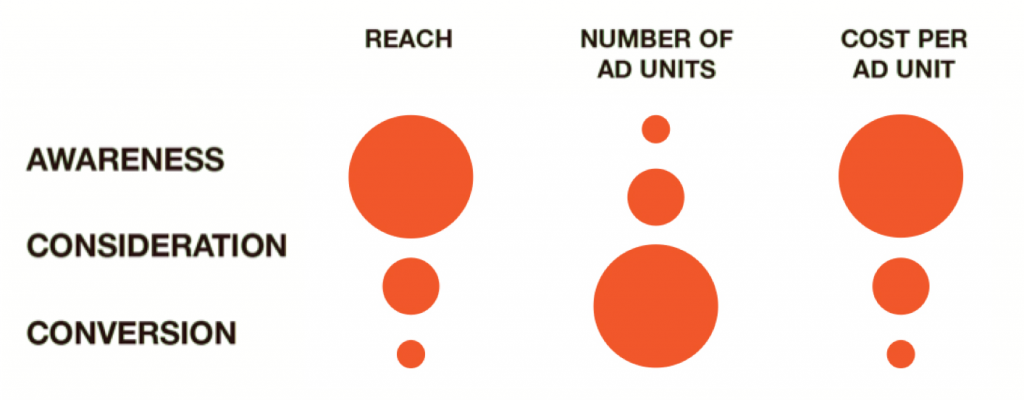Den stora reklam- och kreativitetsgurun Rory Sutherland ifrågasatte en gång varför ”kreativa människors idéer alltid granskas av strukturerade människor, men strukturerade människors idéer granskas aldrig av kreatörer”.
Jag tror att den tanken har något som verkligen resonerar i dessa tider. De tider vi lever i kategoriseras som ”den digitala tidsåldern”, ”Age of Internet”, fjärde industriella revolutionen (eller femte beroende på vem du talar med). Jag tror att en mer träffande beskrivning skulle vara ”optimeringens tidsålder”.
När allt blir digitalt kan allt i livet uttryckas som en siffra. Och när allt är en siffra, blir det oerhört frestande att börja analysera och jämföra dessa siffror. Att använda dem för att optimera.
Denna utveckling begränsar det mänskliga sinnet. Istället för att tänka fritt om att testa nya saker, experimentera, vara djärva och lite galna, tenderar vi att bara fortsätta att göra mer av samma gamla saker, bara lite snabbare och mer effektivt. Utvecklingen illustreras vackert i Orlando Woods bok ”Lemon”, som exemplifierar denna utveckling med allt från historiska jämförelser (det inrutade och tråkiga sen-romerska riket vs det kreativt drivna tidigt romerska) till data på utvecklingen av allt tråkigare tv-annonser i Storbritannien.
Naturligtvis är data inte en dålig sak i sig. Men det finns ett problem när data sätter ramarna för hela verksamheten, snarare än att bara vara ett stycke information som man kan välja om man vill ha som vägledning i ett beslut. Det problemet blir ännu större om du dessutom tittar på fel data, data som egentligen inte är avgörande för er som organisation. Detta fenomen av ”Vanity metrics” är en hörnsten i forskningen från Les Binet & Peter Field, som visar hur varumärken under de senaste åren så målmedvetet gjort Social media engagement, sidvisningar och konverteringsgrader till sina prioriteringar, utan att validera om dessa mätetal faktiskt skapade värde på makro-nivå.
I denna optimerade värld tar jag stor njutning i undantagen. De fall där någon har tittat på data och fortfarande gjort något kreativt, originellt eller direkt galet.
Ett klassiskt exempel på utmanande av konsumentdata är Henry Ford, som har tillskrivits med citatet ”Om jag hade frågat mina kunder vad de ville att de skulle ha sagt en snabbare häst.”
Ett annat exempel på att tänka på helt olika sätt för att få resultat är rymdpennan. Enligt berättelsen insåg NASA att utan gravitation rinner bläck inte ner till kulspetsen i en penna, vilket gör det omöjligt att skriva i rymden. De startade ett då stort projekt: Ingenjörer rekryterades, prototyper byggdes och miljoner spenderas på att utveckla rymdpennan (tydligen blev resultatet någon form av gaspatron för att driva bläcket mot spetsen). Vad gjorde under tiden konkurrenterna i rymdtävlingen, Ryssarna? De skickade upp en blyertspenna.
En särskilt sorglig aspekt av optimerings-epoken är när den påverkar människors vardag. Tråkig reklam eller förlorade möjligheter i omnichannel-marknadsföring är trots allt ganska världsliga frågor. Men optimering kryper in i hur vi arbetar, interagerar och lever våra liv. Jag älskar särskilt undantaget där skolor i Sverige (i allmänhet ett offer för bemannings- och processoptimering) körde experiment där de gick mot trenden och överanställde. De satte bara mer personal i varje klass, utan någon särskild roll, eller sätta ett mål för den delen, och bara tittade på vad som hände. Resultaten inkluderade lyckligare och bättre presterande elever, mer kontinuitet på grund av mindre användning av vikarier, och förbättrad ekonomi eftersom de eliminerade användningen av personaluthyrnings-företag. Positiva resultat av att göra motsatsen till klassisk optimering.
En av de branscher som påverkas mest av optimering är media. Clickbait, sensationalism i journalistik, oklarhet kring intäktsmodeller har orsakat problem för media som försöker optimera och stegvis förbättra sina företag. Mitt favoritexempel på annorlunda tänkande från denna bransch (ledsen New York Times och The Guardian) är F.E.D.S.

F.E.D.S payoff är ” Finally Every Dimension Of The Streets”. Tidningen startades av Antoine Clark i New York 1998 och rapporterar regelbundet om välkända amerikanska mördare, kingpins och pimps. F.E.D.S. kommer ut kvartalsvis, och finns i alla större amerikanska städer, liksom i Taiwan, Singapore, Japan, England och Frankrike. En framgångssaga på en mycket nischad marknad.
Bortsett från det uppfriskande bisarra innehållet (några berättelser från 2020-nummer inkluderar “Wild Cowboys – 158 years to Life”, “A Dangerous Game of Prison Basketball” och “Marijuana: TOO LIT”), är F.E.D.S. intressant för en sak till: Den har inget digitalt fotavtryck. Inget alls.
Det finns ingen webbsida. Ingen Facebook-sida. Ingen Youtube-kanal. Det finns inget sätt att prenumerera på nätet. Du kan köpa fristående nummer genom fristående tidningsleverantörer online, men det är också allt. I en värld där alla analyserar Google Analytics-siffror, utforskar digital transformation och optimerar nya intäktsströmmar, ignorerar F.E.D.S. bara alla standardråd och gör sin egen grej.
Det i viss mån illustrerar skillnaden mellan optimering och innovation. Mellan att skruva på samma som alla andra gör och att testa något nytt.
Och i en värld där alla optimerar i samma riktning, tycker jag att uppfriskande. I en strukturerad och strömlinjeformad värld är avvikelserna i min mening inspirerande.
För lika mycket som livet i en värld av ständig innovation skulle vara kaotiskt och ineffektivt, lika mycket är livet i en värld med bara optimerade upplevelser rent ut sagt tråkigt.
Mot den bakgrunden är jag glad att leva i en värld med F.E.D.S. magazine.








